The world is not new to crises. We have faced them at regular intervals, over the last several centuries. Beyond short-term consequences, these crisis situations have laid the foundation for long-term societal resets – triggering knee-jerk reactions that have truly transformed the way humans live and interact with their environment. In every crisis however, humans have triumphed due to their innate ability to adapt and embrace permanent changes created in response to the situation.

The world lost over 75 Mn people during the Black Plague in the 14th Century, but learned the importance of hygiene and keeping our environs sanitary. Then came World War II, where millions of lives were lost again. Interestingly, the post-WWII period made way for an accelerated pace of industrialization across the world, thus bringing billions of people out of poverty. Jump to the 21st Century, where the financial crisis necessitated massive government interventions to revive the economy through bailouts. And when the ongoing COVID-19 pandemic hit, governments were able to successfully stave off a large-scale economic meltdown by deploying playbooks from previous crises.
Every crisis creates permanent changes in how we live, how we work, how we take risks, how we invent and adopt technology, and how we regulate and reform the markets. However, the current crisis is unique in that COVID-19 has made way for the convergence of permanent changes across all dimensions, resulting in a major reset in how we work, live, and play.
Using the lens of permanent changes wrought by crises, we observed various megatrends driving the world today. We also looked at how COVID-19 accelerated these trends and how broad their impact has been on the overall population and markets.
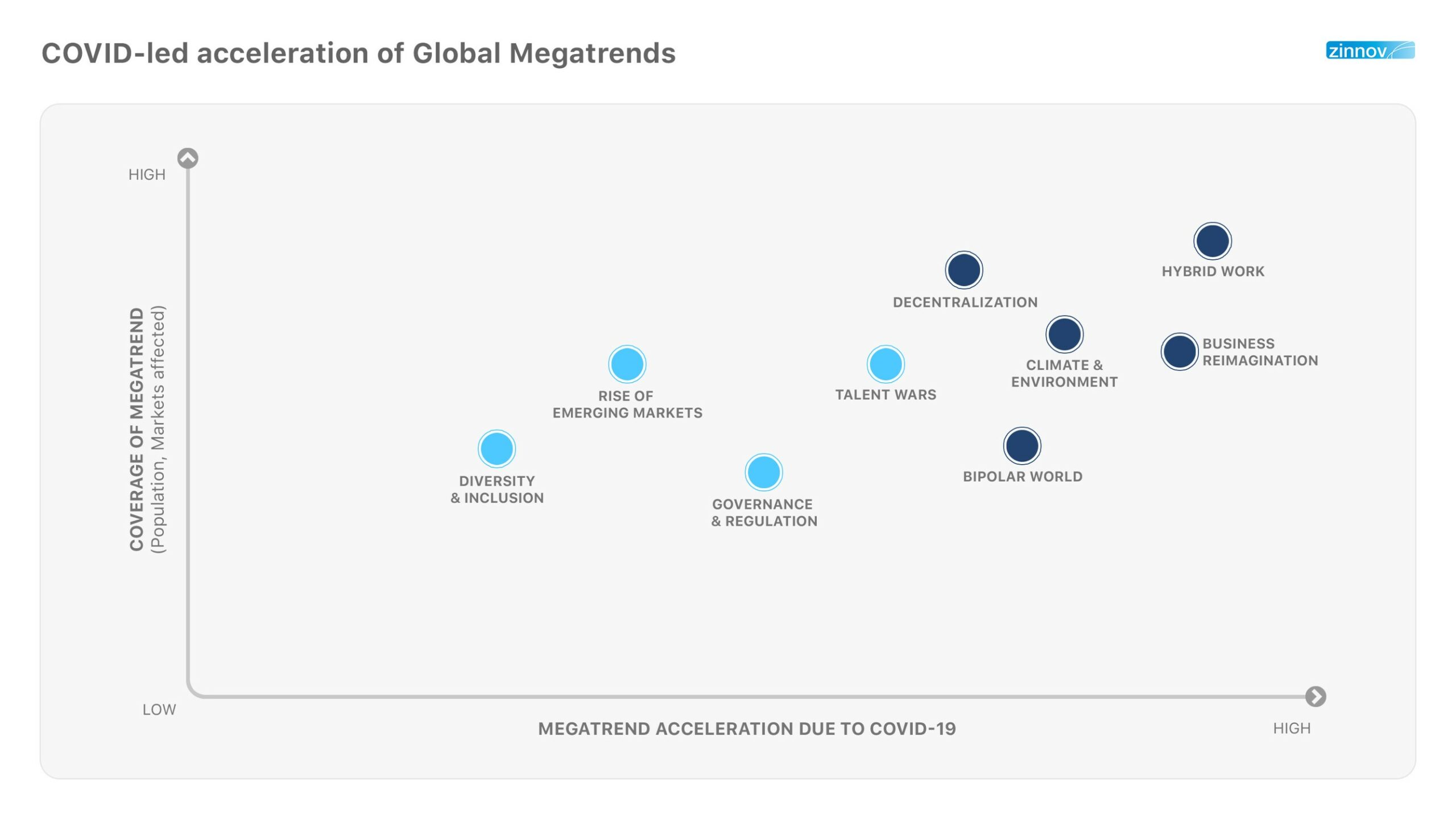
We have identified five megatrends that will have a lasting impact on the world.
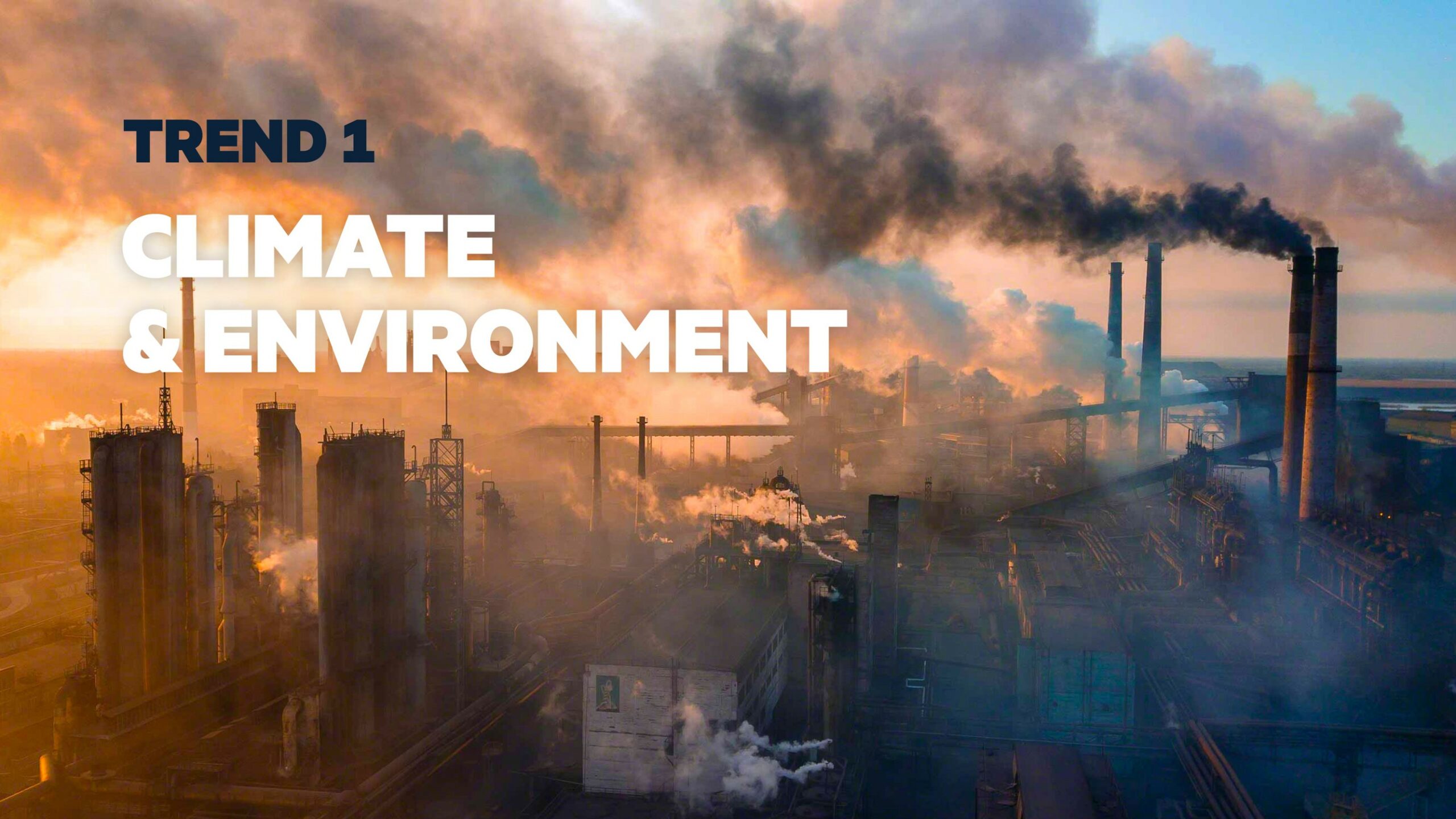
The new IPCC (Intergovernmental Panel on Climate Change) report summary starts with the line, “It is unequivocal that human influence has warmed the atmosphere, ocean, and land.” The past hundred years of human development led by human curiosity, inventions, and imagination brought billions of people out of poverty, but also led to the current climate crisis. But the pandemic has taught us that all is not lost.
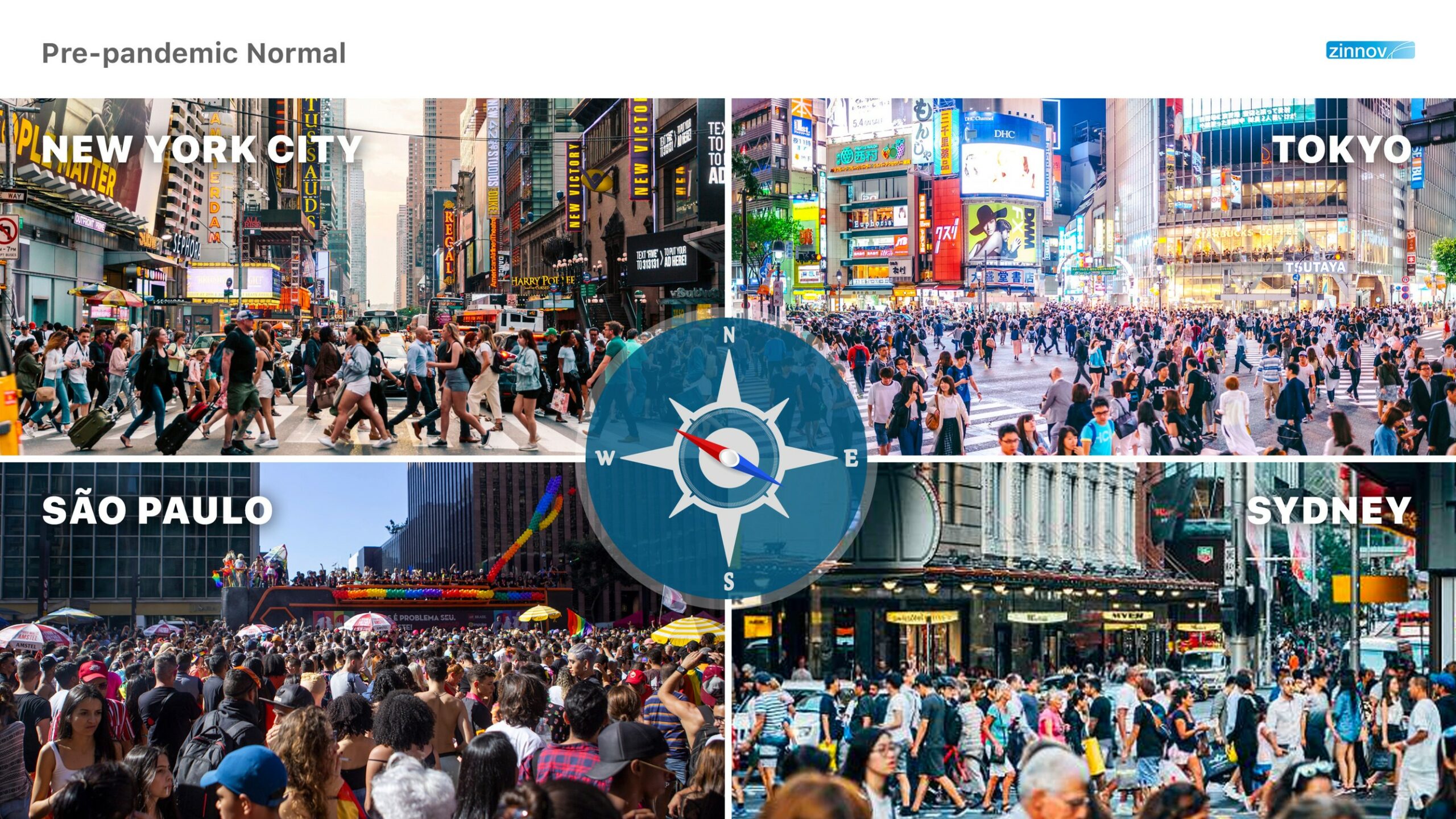
2020 saw the biggest shutdown in human history. As COVID-19 tightened its grip globally, cities and countries across the world went into strict lockdowns to contain the spread of the virus. Schools were closed, cultural and sports venues were shut, and all non-essential businesses came to a standstill. Normally bustling cities wore a haunted look and were eerily quiet, as people were forced to stay at home. The long shutdown even saw animals literally coming out of the wilderness to try and reclaim their rightful place in the world!
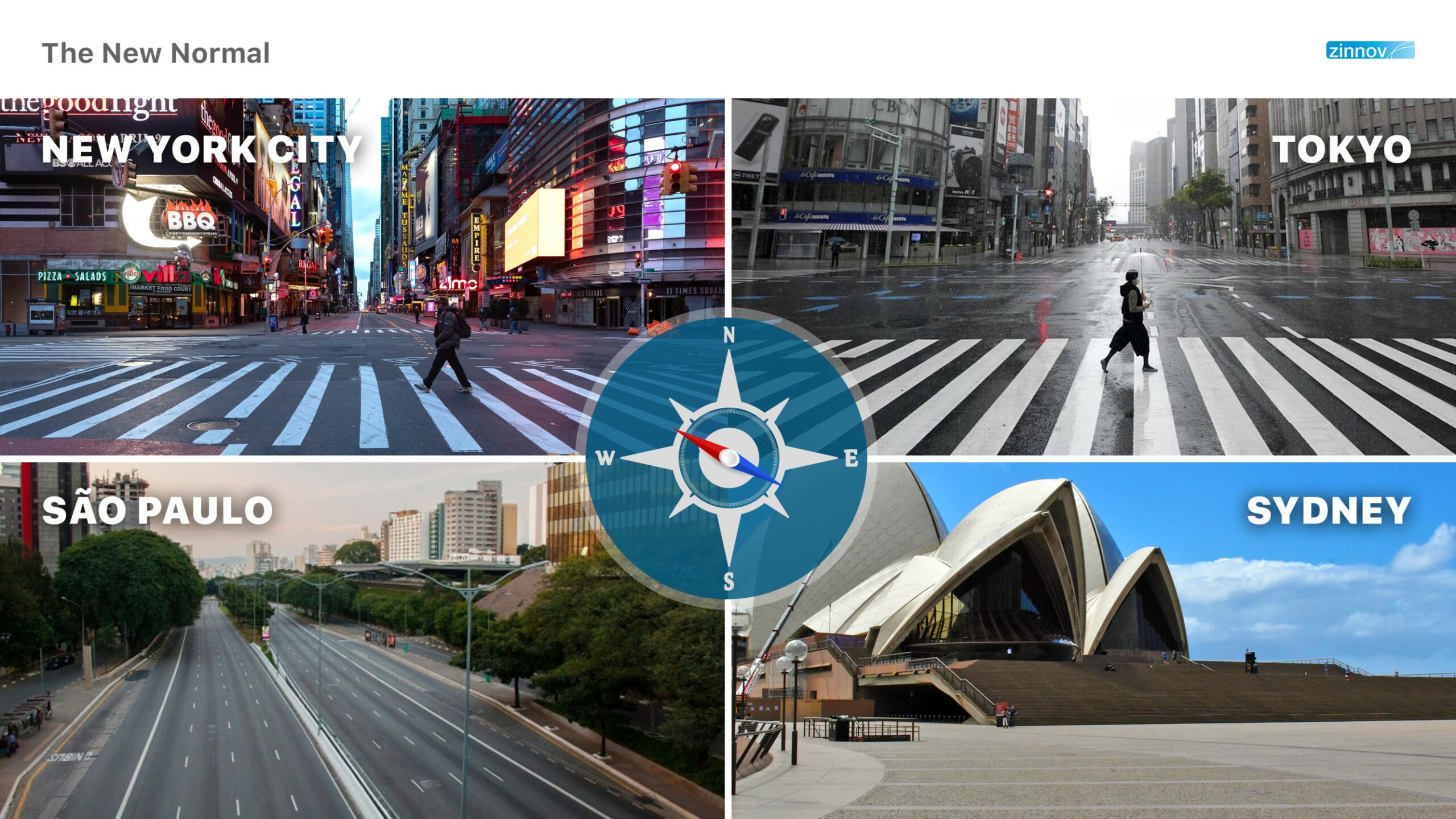
The shutdown brought misery to millions of people who lost their jobs and livelihood; yet, there was a silver lining to this dark cloud. The global carbon dioxide emissions fell by 2.3 Bn tonnes in 2020, after rising steadily for decades. The US contributed the most to this global dip, with a nearly 12% decrease in its emissions, followed by European Union, with an 11% dip. Additionally, people from several parts of Northern India were able to see the majestic Himalayas on their skyline, for the first time in decades.
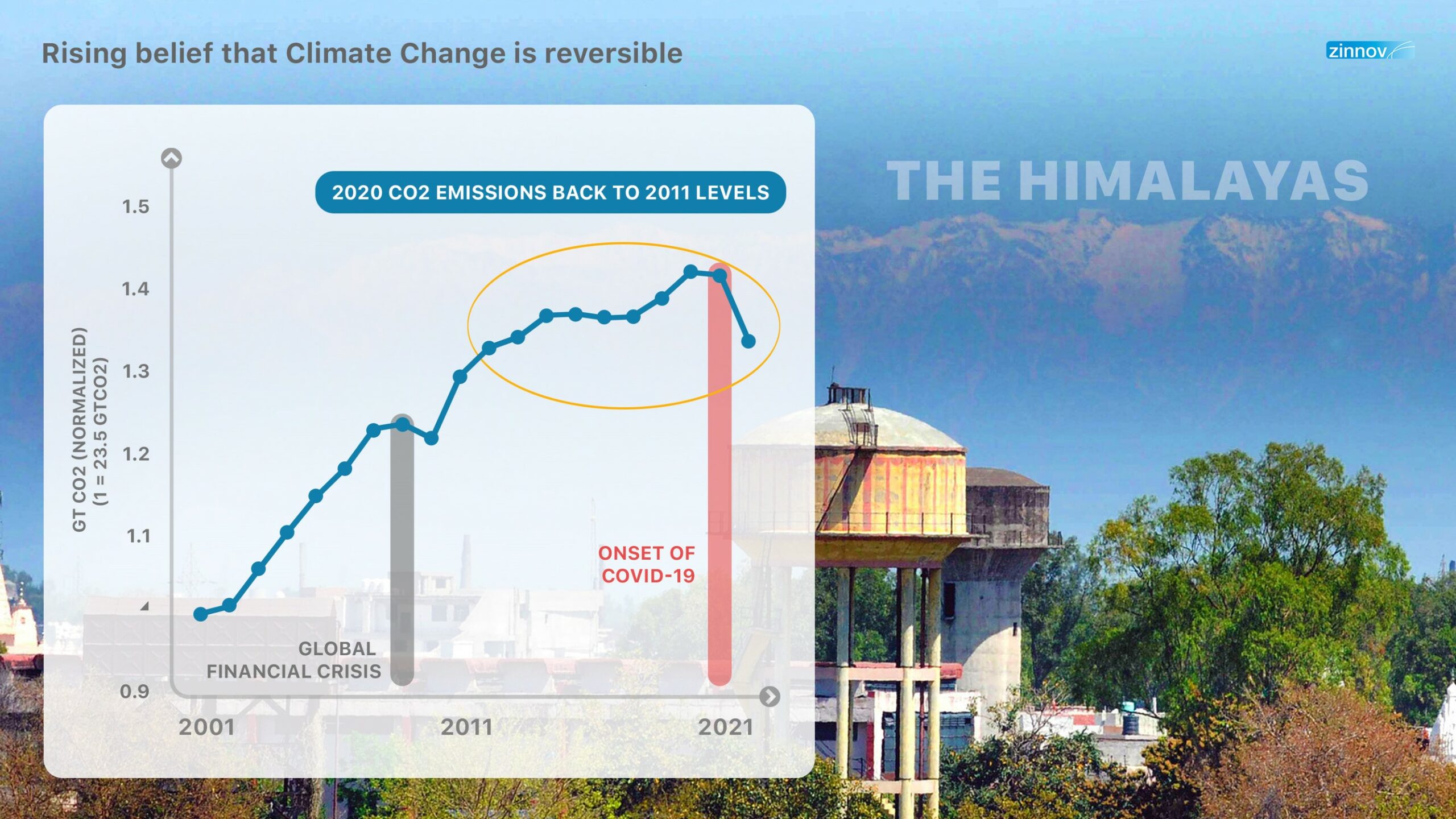
Given how we have been able to reverse the climate change from 8 years in just 1 year, we believe that if human ingenuity is put into play, we will be able to do a lot more in the coming years (obviously, without locking down countries!).
Sustainability and decarbonization have gained mindshare across corporate stakeholders. Companies such as Apple, Volkswagen, have linked ESG (Environment, Social, and Governance) outcomes to executive pay. In fact, there is an increased urgency among governments and regulators to increase focus on ESG among corporates. In fact, the US Securities and Exchange Commission (SEC) is working towards an ESG Disclosure Framework for US Inc., where it is actively laying the groundwork to make ESG and climate an indelible part of investments.
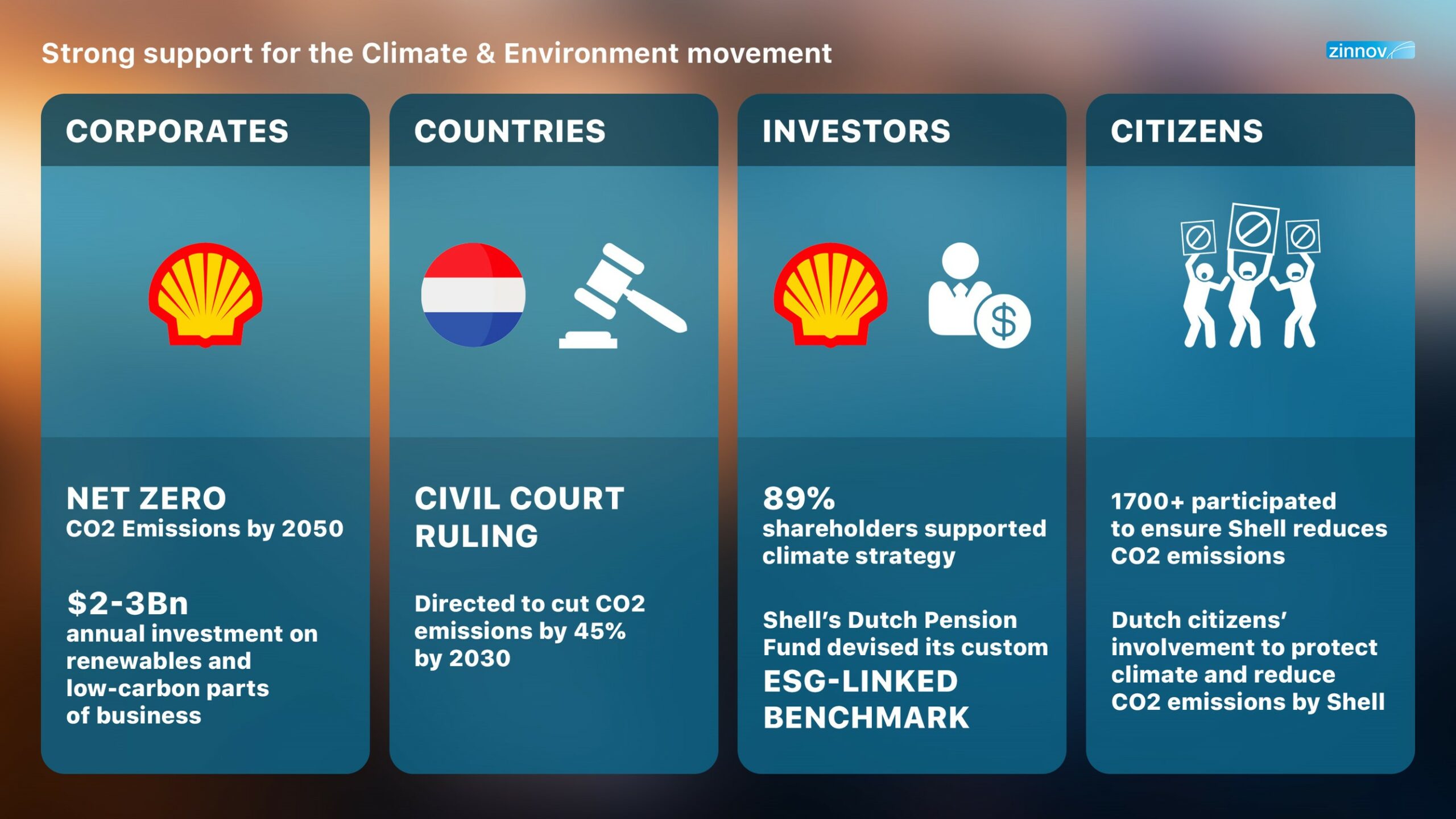
Shell is a case in point. The oil & gas giant’s roadmap to becoming carbon neutral is an example of how various stakeholders are coming together. Shell has the goal of becoming carbon-negative by 2050. An overwhelming 89% of the shareholders supported the plan during the 2021 annual general meeting. The Netherlands has ordered Shell to be even more aggressive in its plans to cut emissions. And last but not the least, there is a lot of grassroots-level pressure from Dutch citizens to accelerate Shell’s plans to reduce carbon dioxide emissions.
This is a clear trend that will shape the next decade.
Besides our collective conscience, having individual accountability across all levels of the company is imperative. It is a known fact that CEOs of large companies in the US make up to 300 times more money than a typical worker. Furthermore, our estimates show that CEOs’ individual carbon emission when they travel in their private jets as well as when they fly business class, they are responsible for 60 times the carbon emissions than a typical worker.
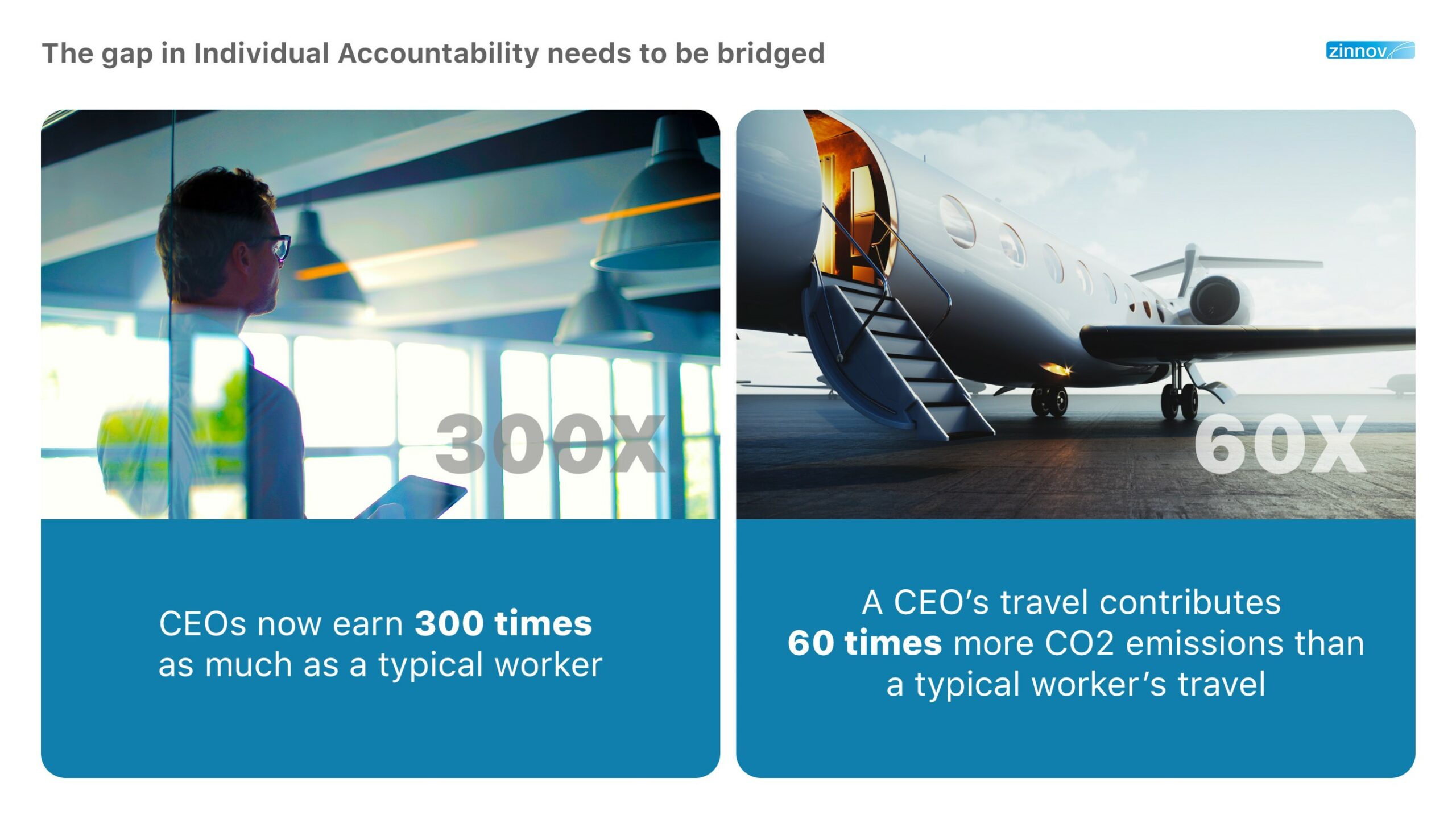
In fact, a typical senior leader in any large company has a much larger carbon footprint than their employees. Something to reflect on for all of us. We believe that commitment to ESG and sustainability will have to start from the top, and trickle down across the organizational rungs.
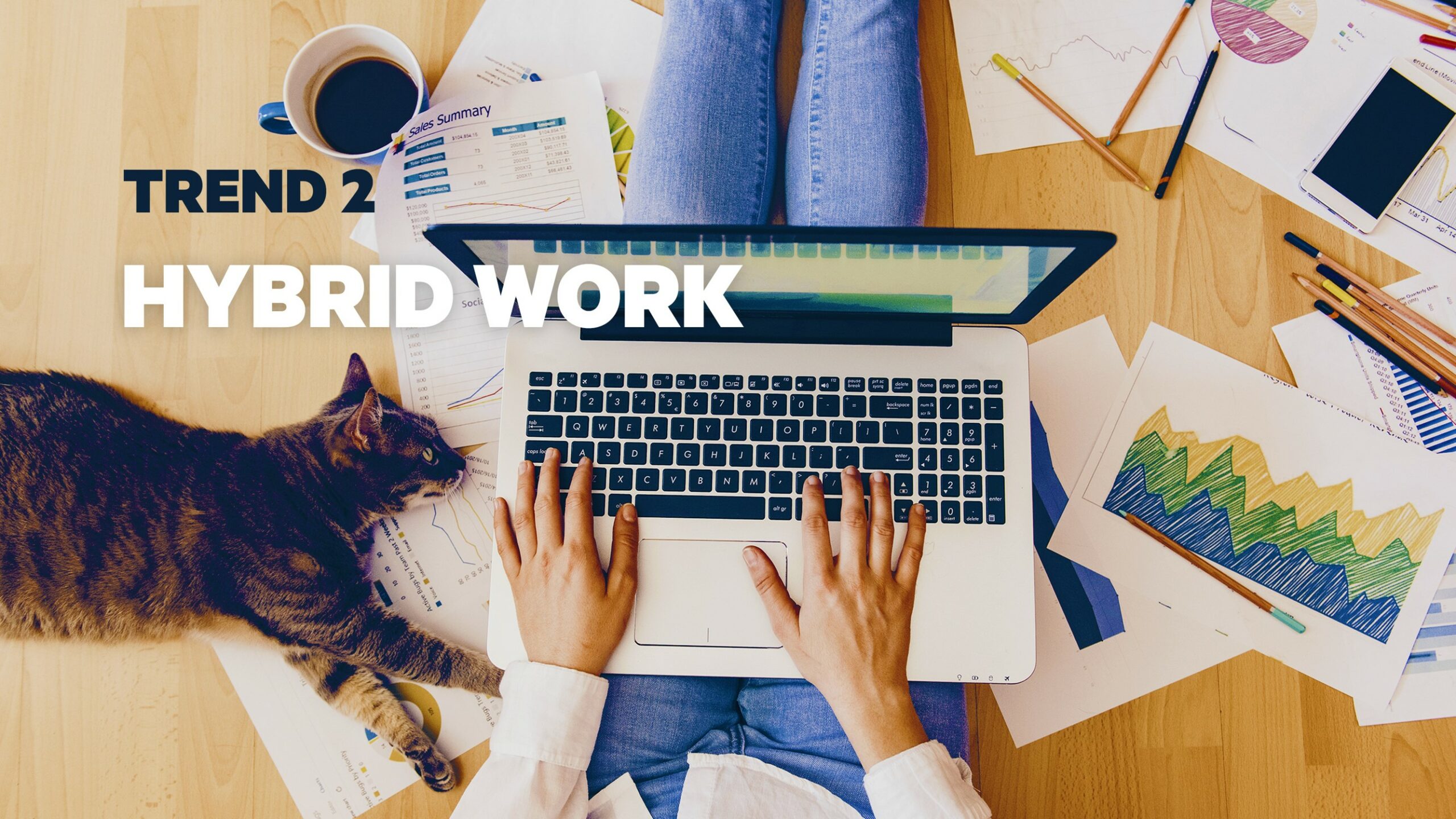
Work has changed so dramatically in the last 18 months, that we might never go back to the way we use to work. There are but a handful of examples in human history when the habits of a large part of the population were changed quite so suddenly.
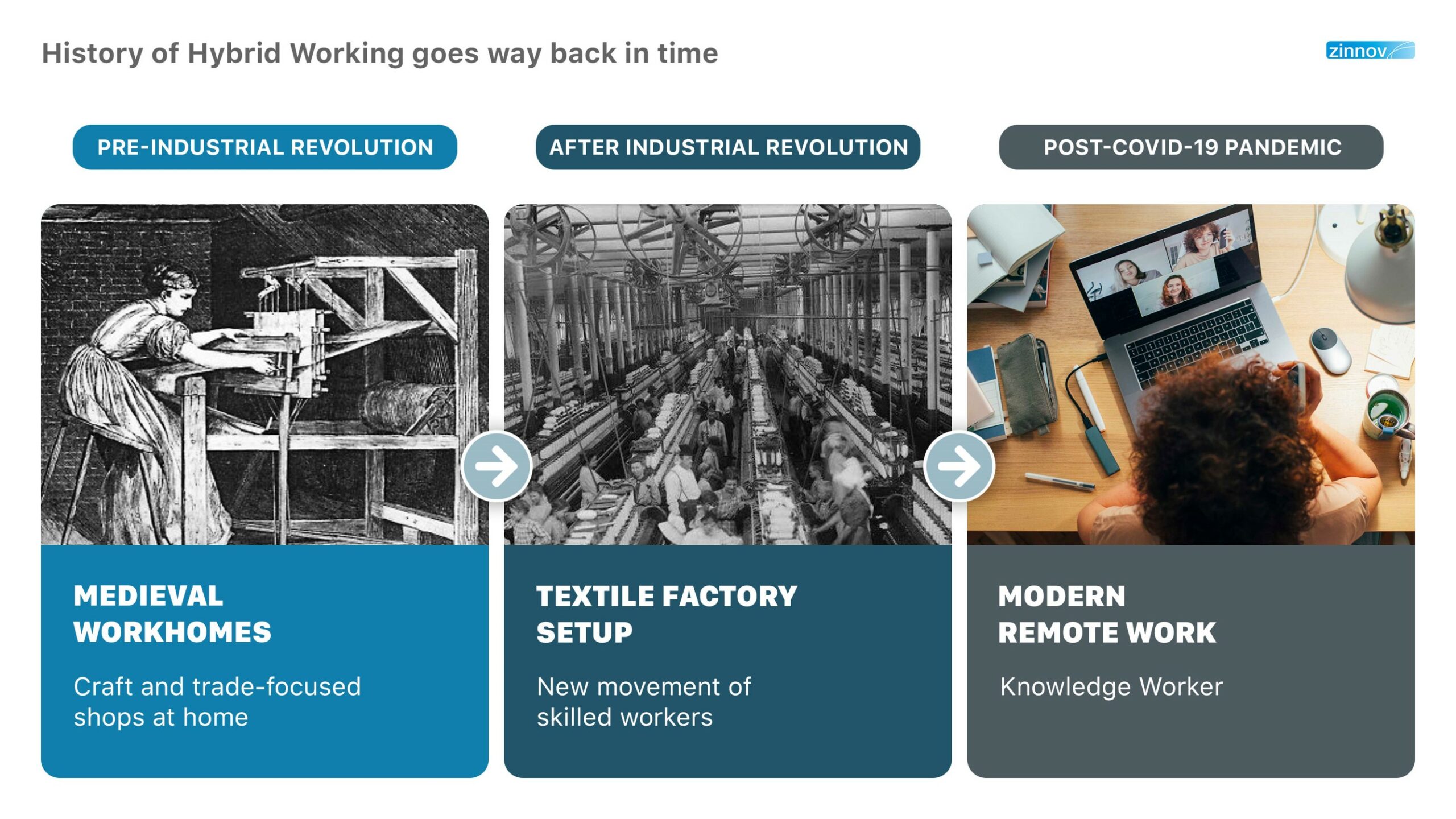
Remote work is, in fact, not a new concept. In the context of human evolution over millions of years, going to work in an office is a relatively new phenomenon. Even at the start of the Industrial Revolution in the 18th Century, companies gave work orders to employees who completed tasks on their time and got paid for the outcome they delivered. The advent of large machines, assembly lines, and worker specialization required workers to come to a common place, resulting in the creation and expansion of factories and offices of today.
The extended period of work from home phenomenon seems to be changing the relatively recent habit of work from office.
Employees had to sacrifice their family and culture to earn a living, by moving to locations where they found work. Today, it is possible for a highly qualified engineer to work from anywhere in the world. Take the case of a Kazakhstan-based engineer. She continues to live with her family and friends, and is still able to create a deep impact at work by working on cutting-edge technology.
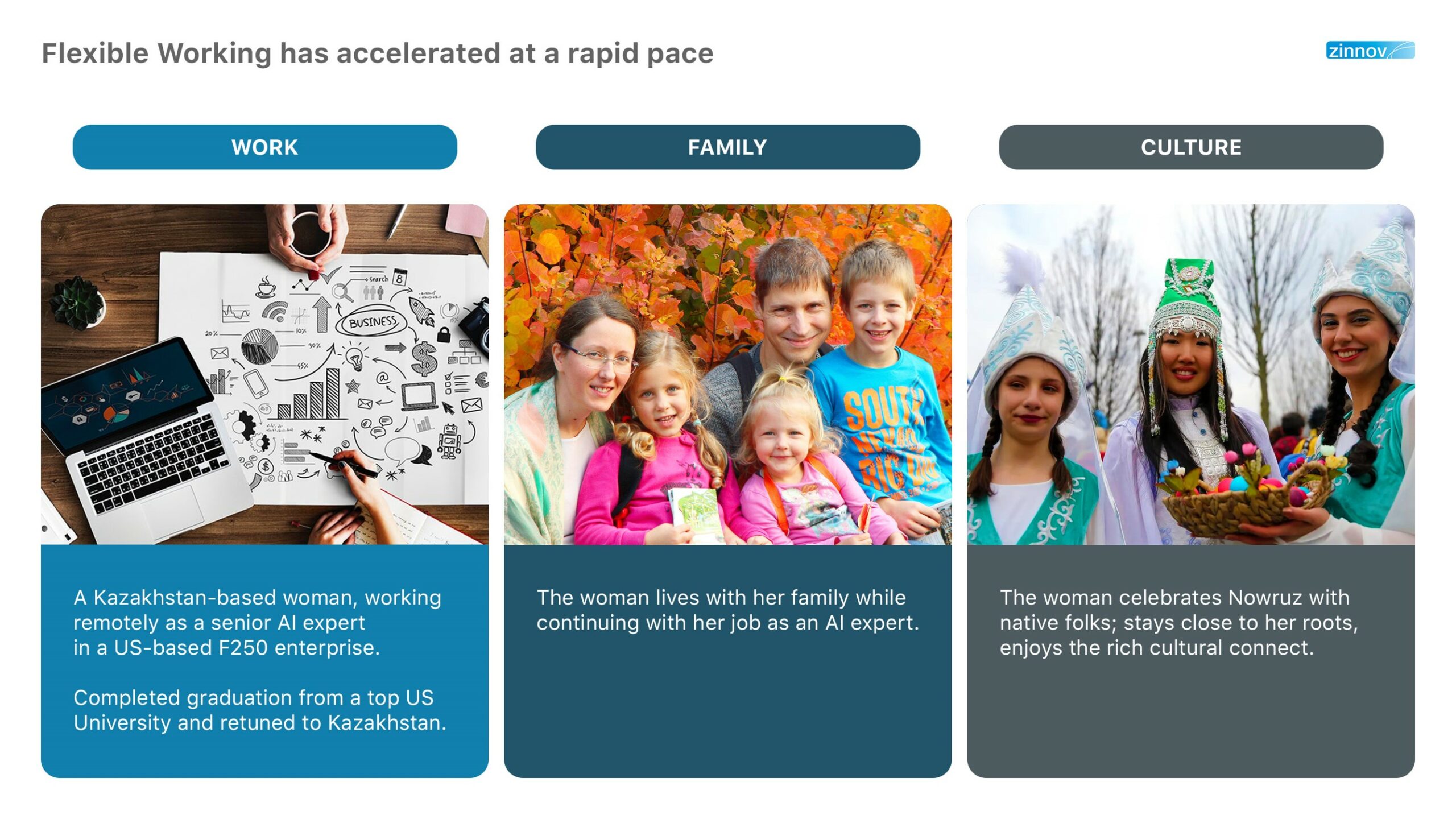
High-paying jobs in smaller towns and cities have the potential to create significant employment in those locations and reduce blue-collar worker immigration to crowded cities across the world.
Pay for outcomes could potentially bring equity in compensation across locations. We believe that there may come a time when the top-tier tech talent in the world will be managed by agents similar to sportspersons and movie stars! Restricted Stock Units (RSUs) could be morphed into profit-sharing and product royalties to top talent.
The two Nobel Prize-winning scientists who worked on Crispr technology were based in Berkeley and France respectively. When people are able to invent technology with a potential to have a major impact on healthcare over the next century remotely, a lot more is possible from remote work.
As leaders, we need to evaluate the future of work from first principles thinking.
How can we use the tools in our arsenal to enable remote work? Every meeting in a company now leaves a definite digital footprint. Using Artificial Intelligence (AI) in all corporate meetings in the company, the leadership will be able to understand how well the teams interact and cooperate with each other. It also highlights the team-level issues that the company needs to address. A lot of this is possible without violating any employee privacy concerns.
It’s a given that in-person interactions will continue to play a significant role in how we build culture and relationships in companies. However, deeper thinking, experimentation, and learning from the network will allow us to iterate on and arrive at the future of work over the next several years.
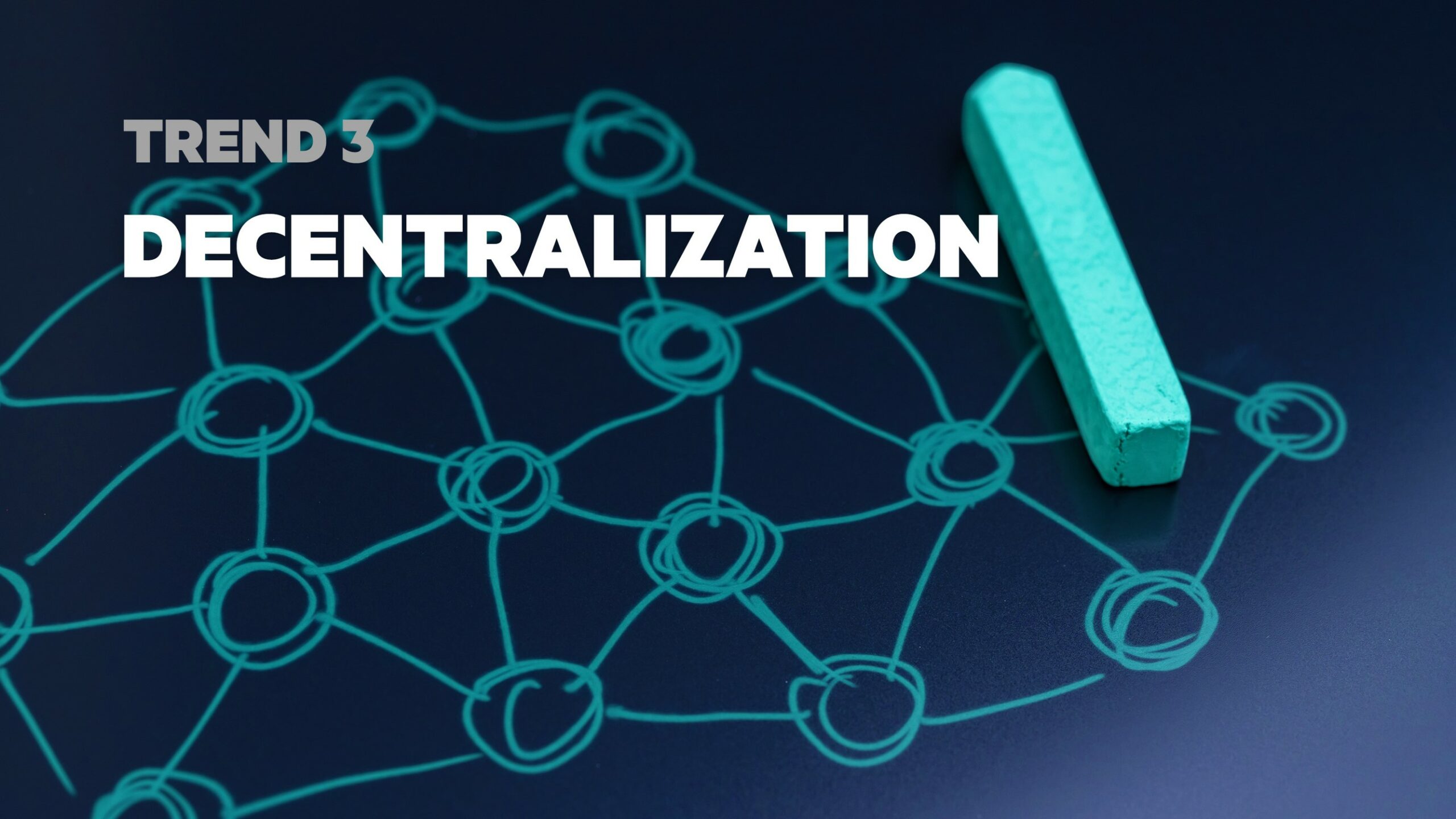
Decentralization is gradually taking center stage. Free will is something that drives us and is a defining feature of our species. The last 18 months have brought so many restrictions, that humans are on the verge of wanting to break free from all restraints. We could move towards technology, political and economic models that will allow us to express and exercise our free will and avoid centralized control wherever possible.
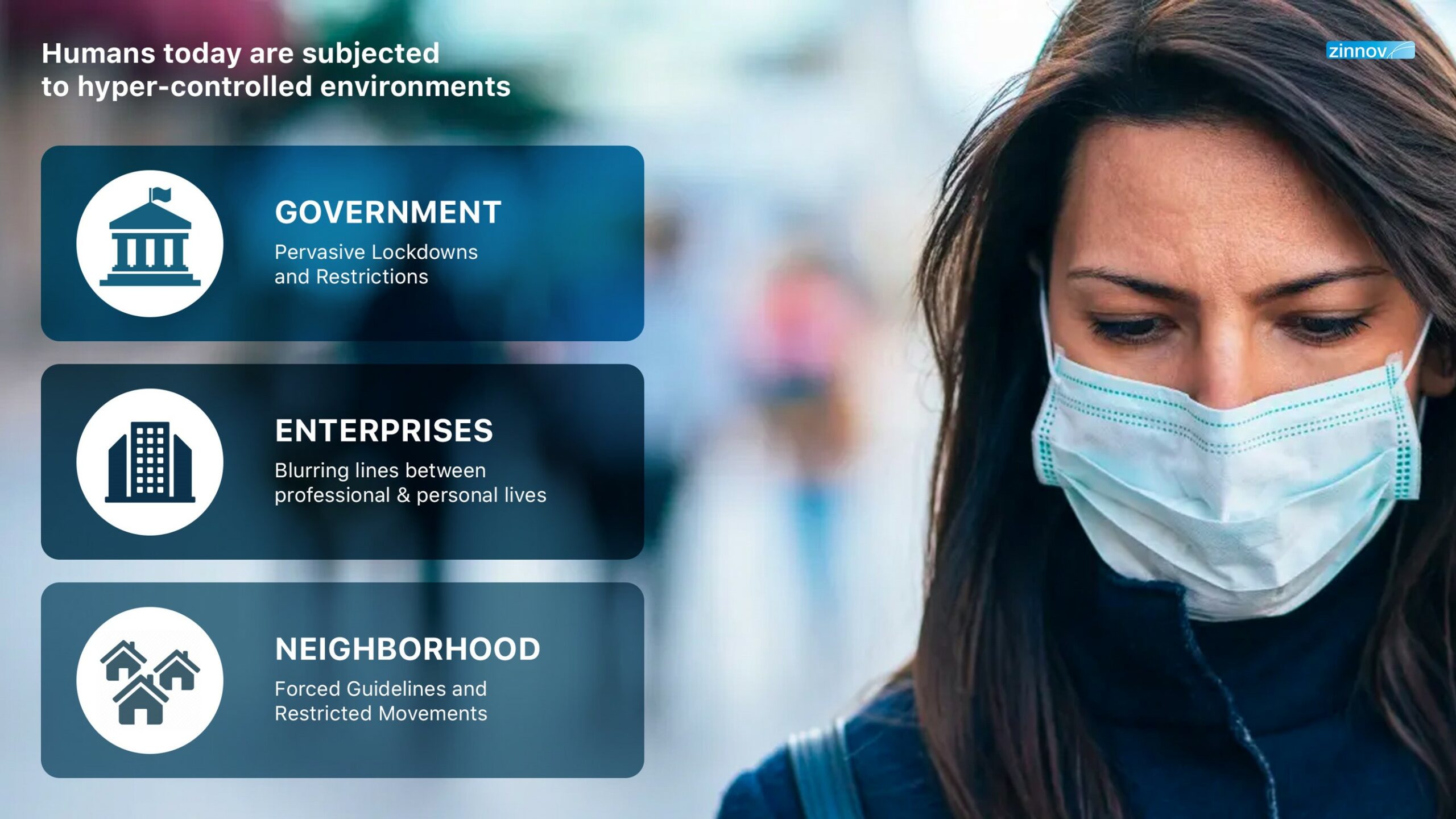
We now have controls not just at the country-level, but also at the state, city, and even at the community level. Even individual apartment complexes have their own set of COVID rules that need to be adhered to. There are so many rules and restrictions around us, and they keep changing as we react to the mutating virus. Even what we communicate is being controlled by various social media aggregators. This has created a lot of frustration among people, and we have already witnessed protests across the world where people want to take back their freedom to socialize, travel, and live.
When there is a feasible decentralized option, we choose to adopt it over other centralized options. Cryptocurrency is a great example, where decentralized technology has allowed to create new alternatives to store value and fiat currencies. Today, individual countries control the flow of money. The countries with strong reserve currency such as the US, have the ability to print money in the trillions, that dilute the value of dollar foreign reserves of countries across the world. Bitcoin and other Blockchain-based cryptocurrencies are rapidly removing the financial intermediaries, be they the bank, government, or regulators, and allow for peer-to-peer transactions.
Technology could potentially change democracy by creating an extreme level of transparency in all transactions involving the government. The next generation of social media could be decentralized, so that no one company is the custodian of the collective consciousness of the society.
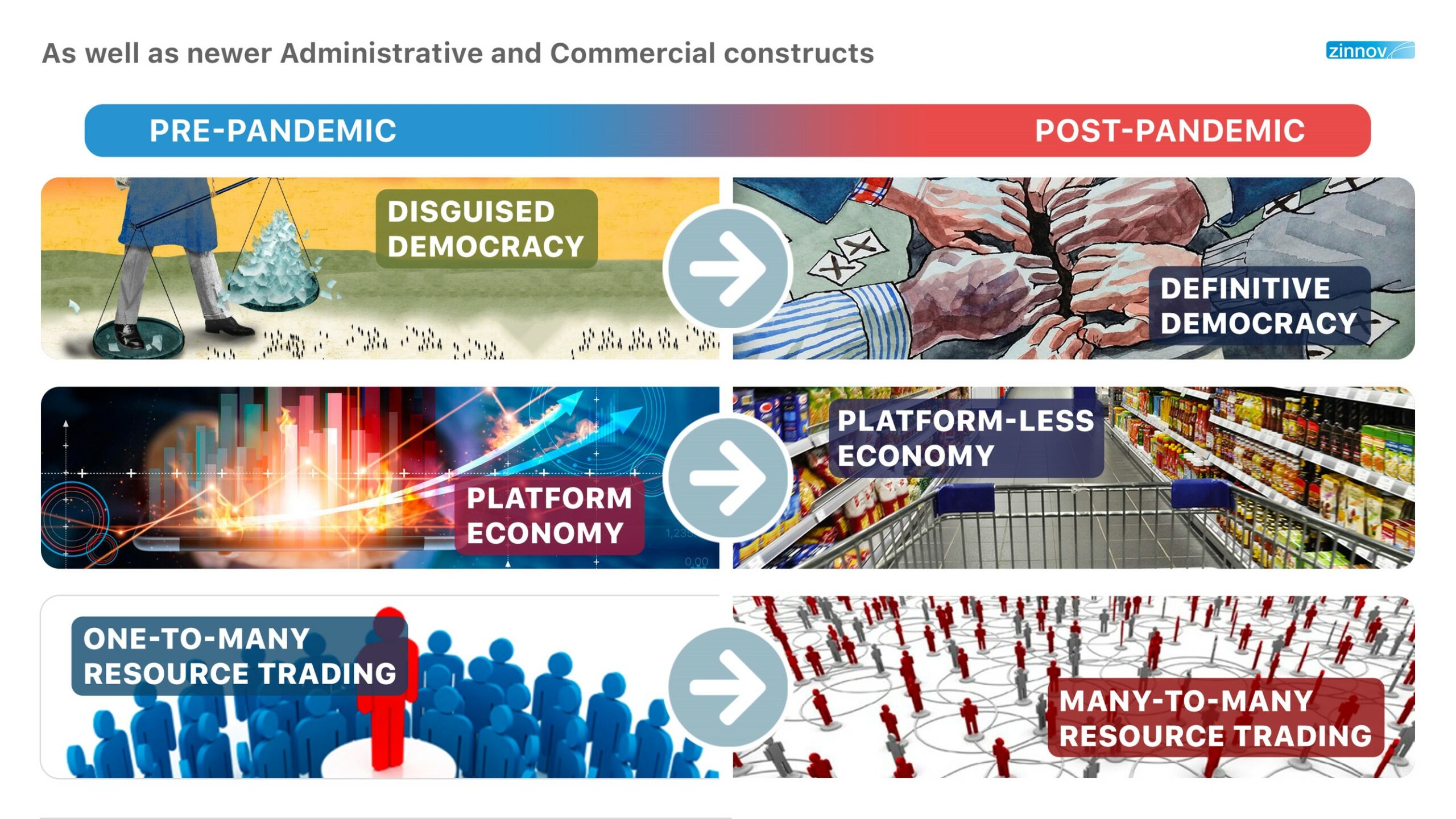
The modern monopolies in the world are aggregators who have built two-sided marketplaces that allow them to control when people buy and sell. Decentralization can also get rid of the need for platform aggregators and enable seamless peer-to-peer connections, relationships, and transactions.
The advent of decentralization hopefully, will be an antidote to the increased central controls that we have witnessed over the last 18 months.

We are headed towards a bipolar world, where power will rest within two centers. Throughout history, there have been two major power centers that have existed. Even as far back as 500 years ago, China and India contributed to over 50% of the world’s GDP (Gross Domestic Product).
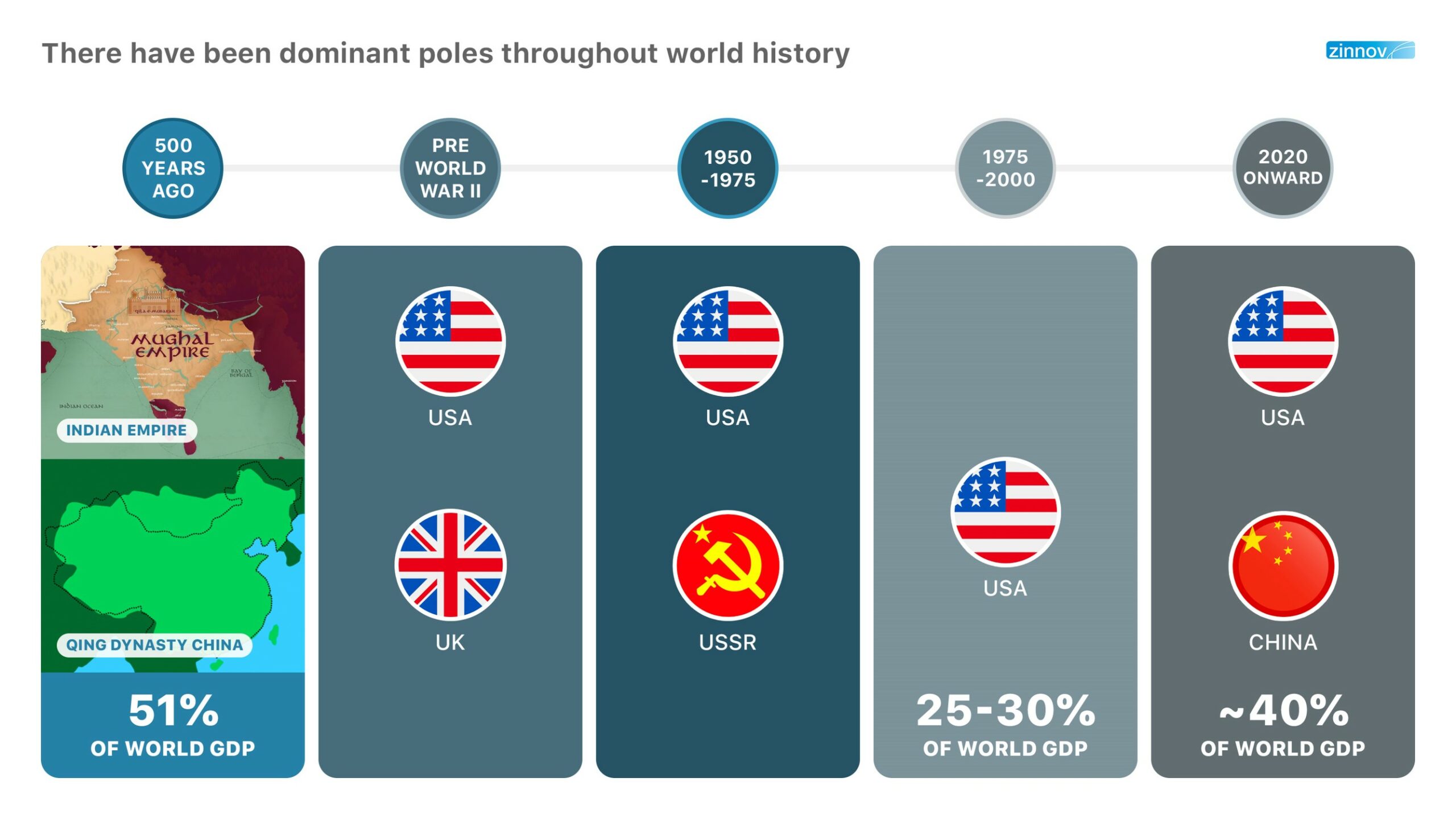
Before the two World Wars, the US and UK were the power centers, which flipped post the WWII, making US and the USSR the power centers. For a brief period after the cold war, the US was the only global superpower. In the 2000s, China began to emerge, and COVID-19 has clearly accelerated China’s emergence on the global scene as an economic and political power center, with significant clout.
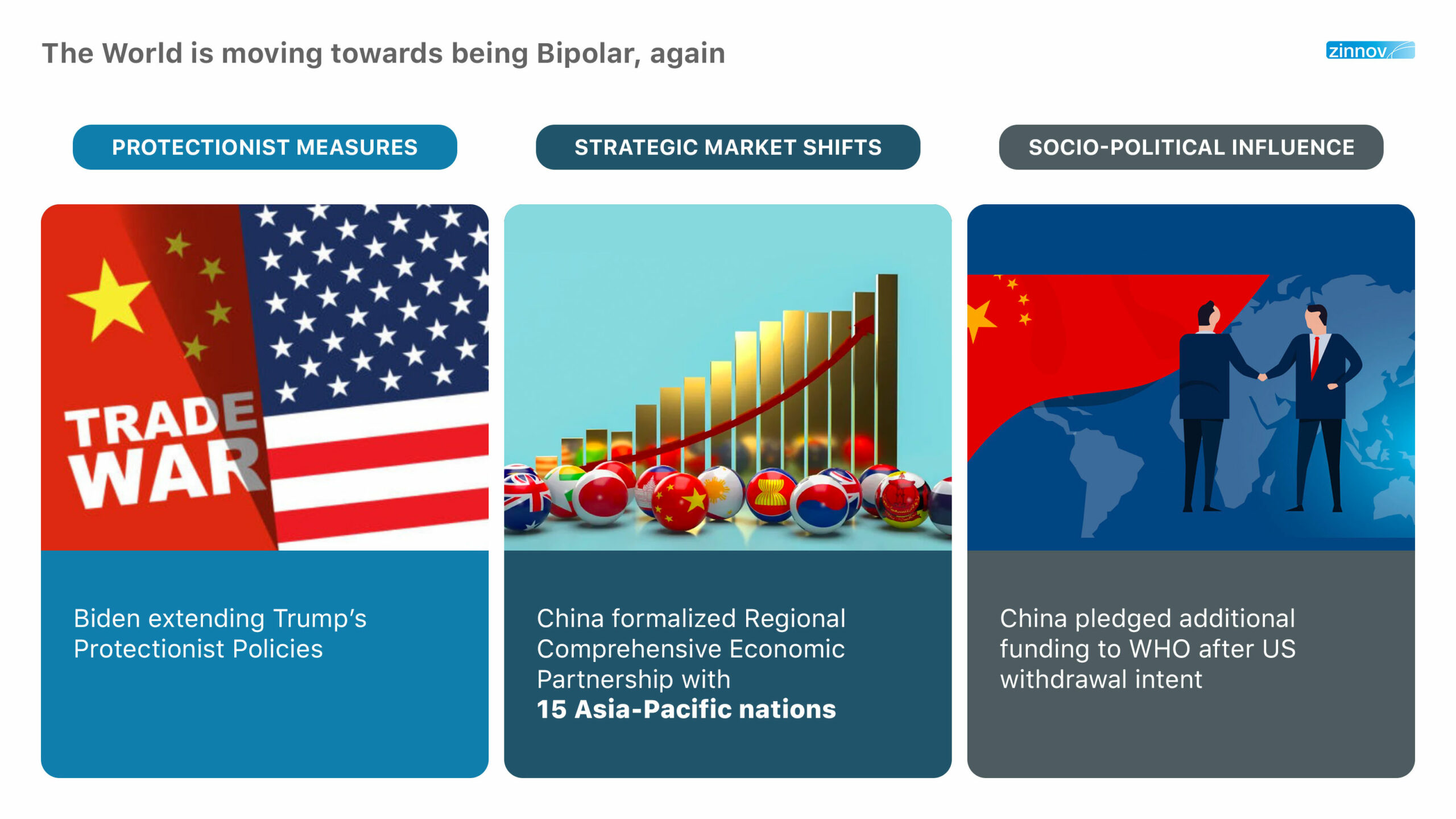
Similar to the Cold War period, the coming decade could pull the world largely into the influential spheres of two different ideologies and principles – the US and China. Both countries have displayed strong protectionist policies, tried to create political and diplomatic influence. Vaccine diplomacy is a great example of this influence. Further, there are a lot of boardroom conversations and discussions to de-risk Chinese supply chain dependencies. In industries such as Semiconductor, there is an increased focus on creating alternative chip-making hubs to reduce the dependence and reliance on China. The signs are clear – we are already in or decidedly moving towards a bipolar world.
With the US and the rest of the Western world at loggerheads with China, India will be a natural ally to the West. India has already proven its might to the world through its intellectual muscle power in Technology Services and Global Centers of Excellences (GCoEs), exported over 1 Mn engineers to the US, who are working on inventing and scaling technology capabilities for large companies and start-ups alike. India is also building a strong foundation to create SaaS product companies focused on selling to the US and other Western markets.
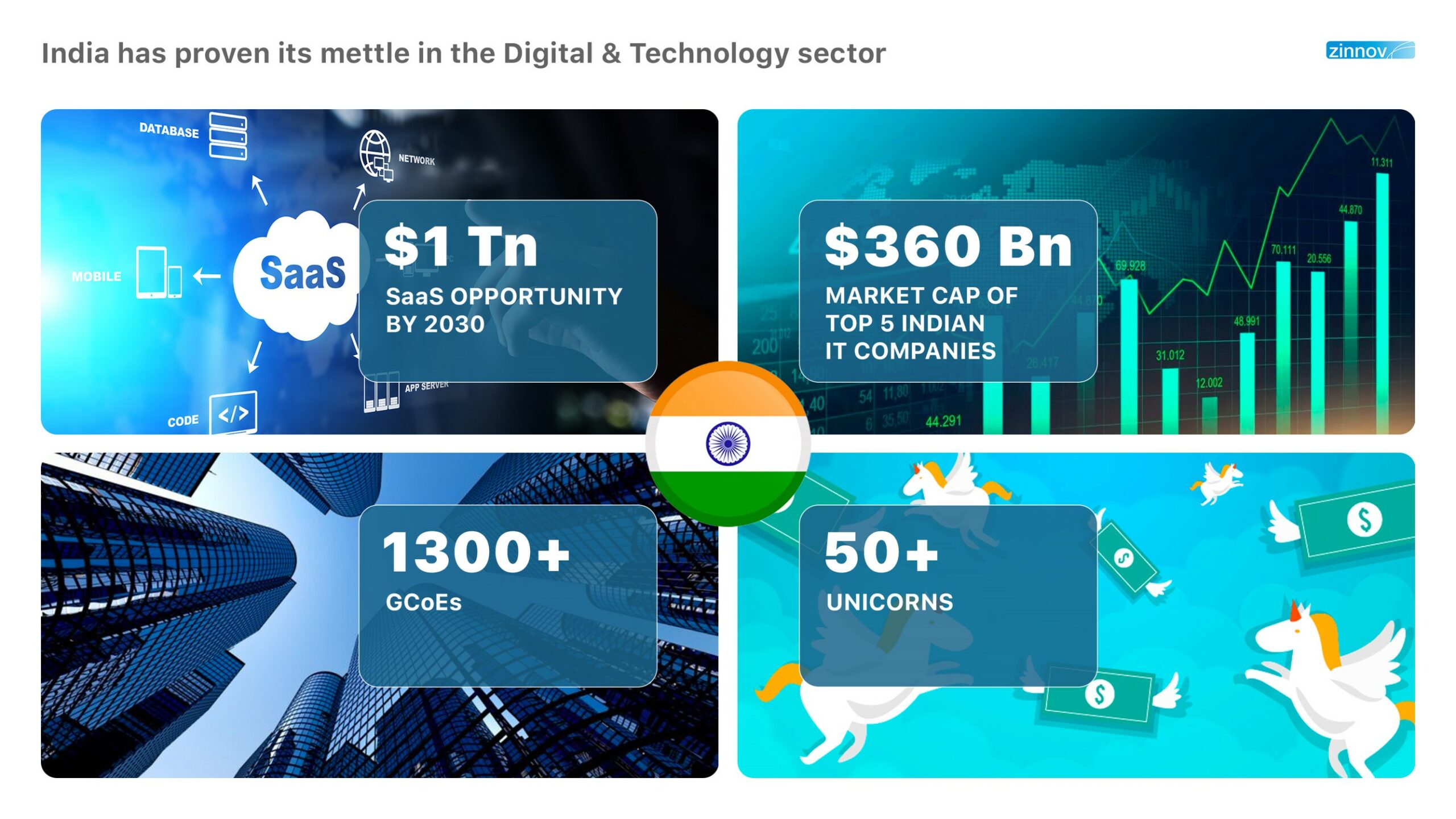
The impending trillion-dollar SaaS opportunity, the presence of 50+ Unicorns, the presence of other strong ecosystem enablers – are furthering the case for India to become a critical cog in an increasingly bipolar world.
India’s ability to be a true partner to the US and its allies is proven in the technology industry, and we have a window of opportunity to replicate this across manufacturing, pharmaceutical inventions and manufacturing, semiconductors, defense, and become the digital innovation hub for new technologies.
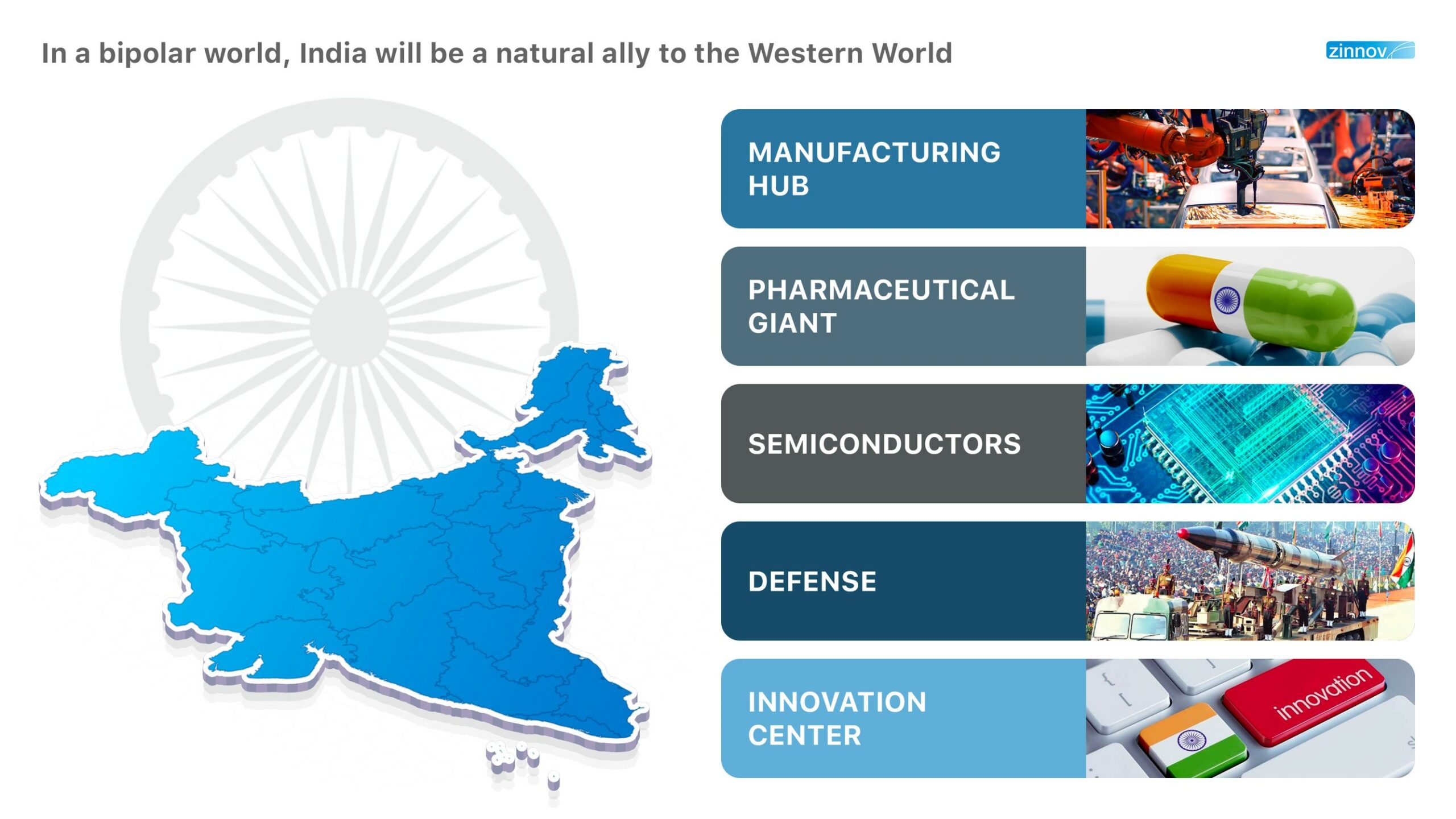
The governmental push to make India a global manufacturing hub through targeted initiatives and policies, India being the world’s pharmacy, the presence of top global Semiconductor MNCs and related talent, our defense prowess, and our innovation hot-streak when it comes to new-age digital technologies – have made India an undeniably attractive ally for the West. Additionally, India also has the potential to be the hotbed of sustainable innovations, as sustainability takes the corporate center stage.
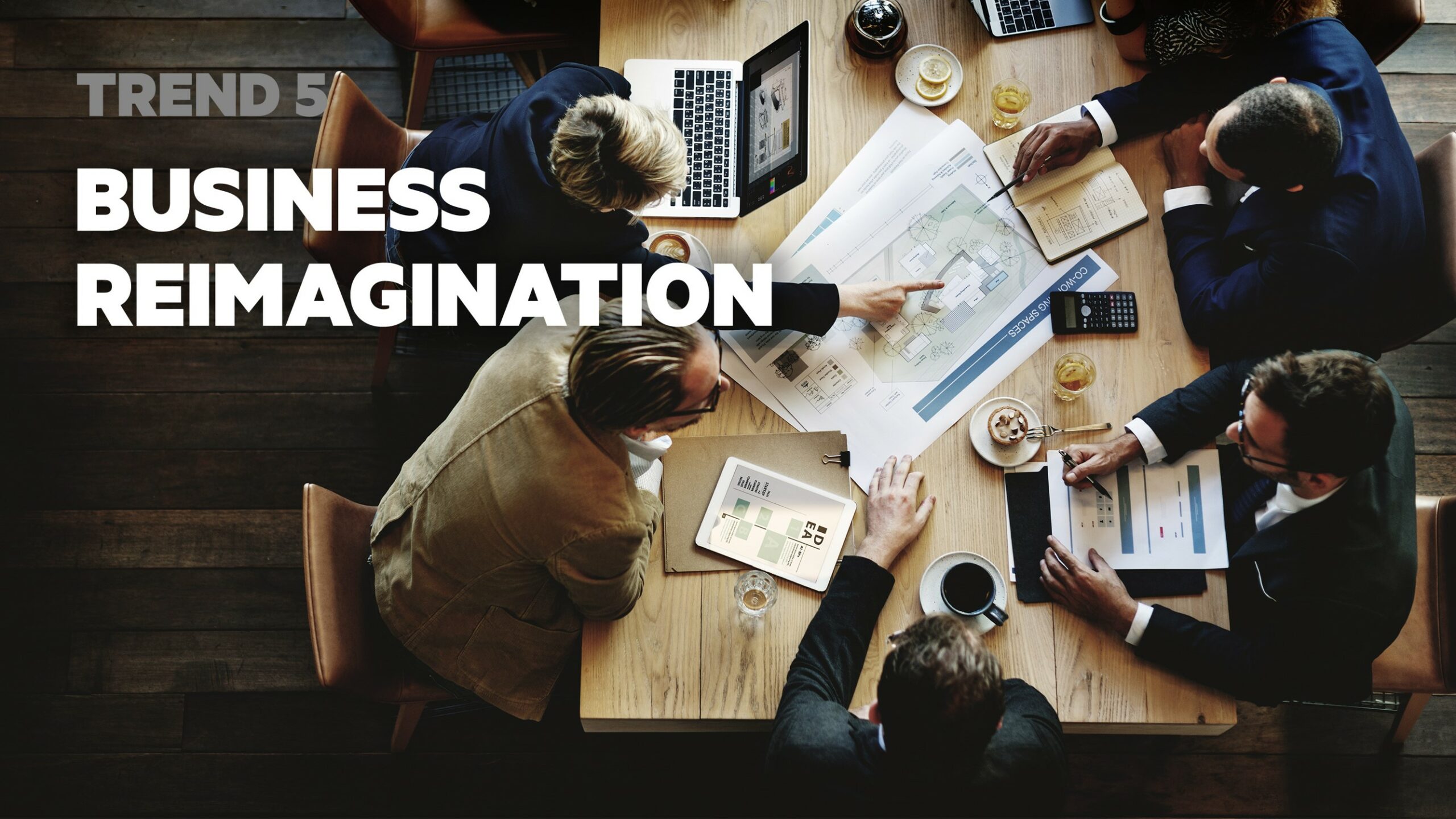
The final megatrend is how businesses reimagined themselves to adapt to the change during the pandemic. The confidence in executing hyper speed changes could, in fact, become a habit for companies.
Think of the speed at which GCoEs in India planned and executed their vaccination drives. Initiatives of this magnitude in the past would have taken several months to even make a compelling business case. It would have had to then jump through multiple hoops with several stakeholders to get the necessary approvals. The global team would have mandated the creation of a uniform policy across its centers around the world, while not creating anything specific for India. Legal would have raised concerns on liabilities, while Accounting/Tax would have raised concerns on tax implications from the vaccination drives.
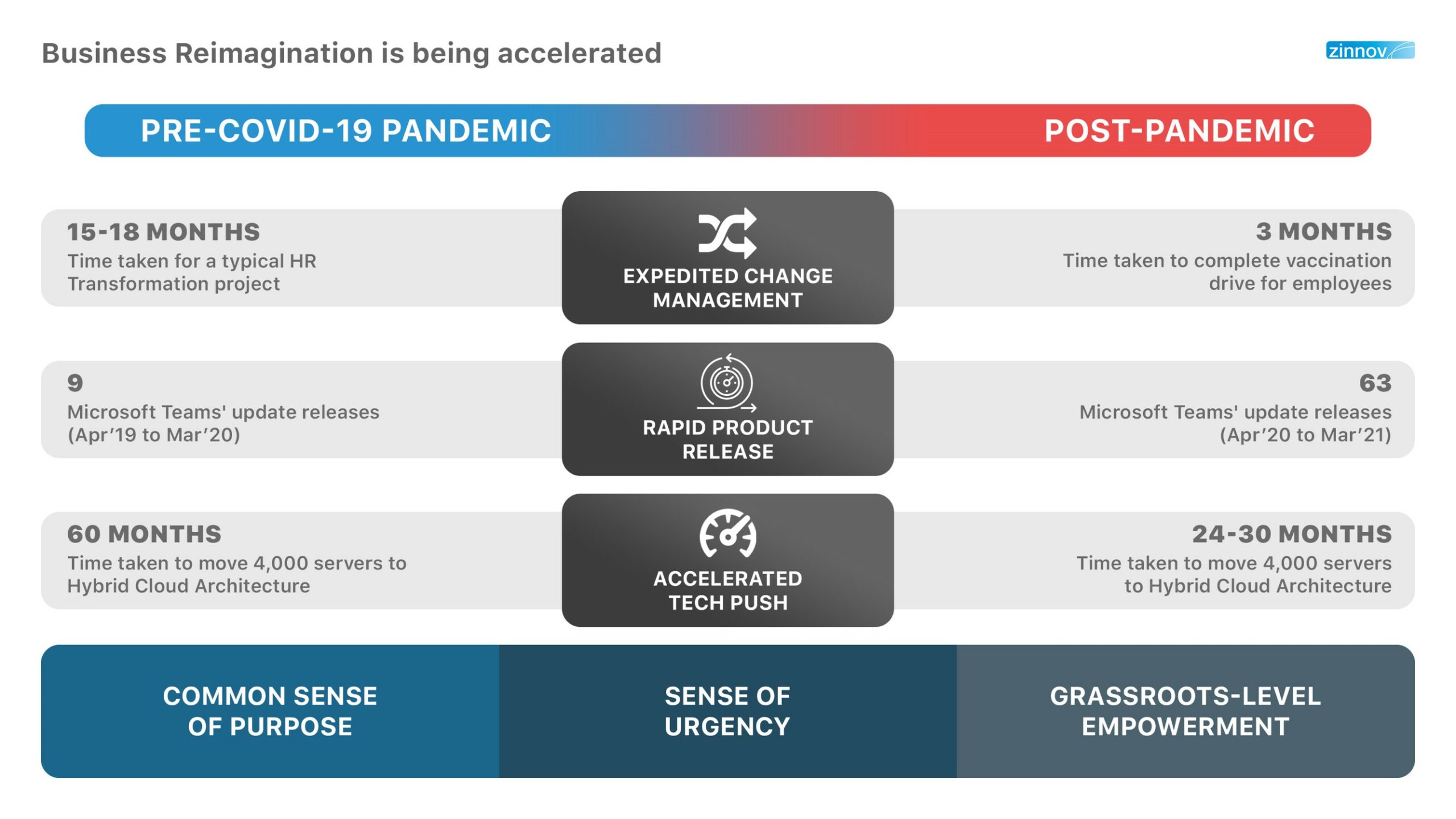
The multiple back and forths would have frustrated everyone in the process. And finally, by the time approvals would have come through, the GCoE would have been asked to wait for the next budget cycle! However, the reality was altogether different – during the second wave of the pandemic, when vaccines were made available, companies were able to design and execute large scale vaccination drives in a matter of days. Due to the concerted efforts of the GCoE leaders, the majority of the talent could be fully vaccinated by the end of September. Companies were able to increase the pace of product releases, while also increasing the pace of digital transformation.
The ability to transform at speed already exists in organizations; however, COVID-19 allowed them to not only discover that muscle, but also flex it significantly.
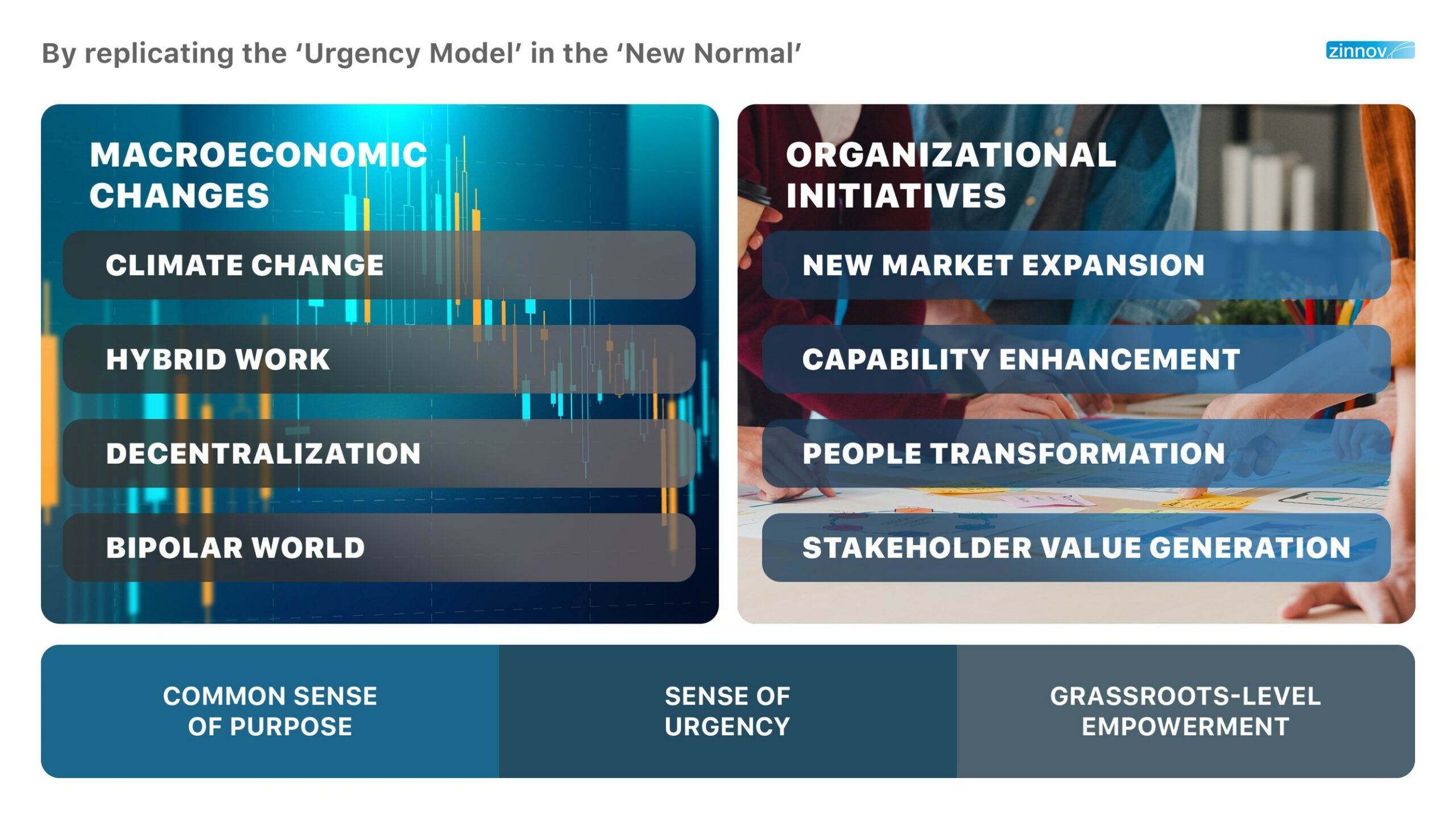
Our hope and belief is that organizations will use this newly discovered muscle to drive change and transformation across all the 5 megatrends, but also in how they enter new markets, build new capabilities, and generate stakeholder returns.
Finally, to make a dent in organizations across the 5 megatrends, a different kind of leader is needed. And leading a remote organization, especially during periods of such rapid changes is not easy. However, leaders can potentially lead with speed and agility by following a few basic principles:
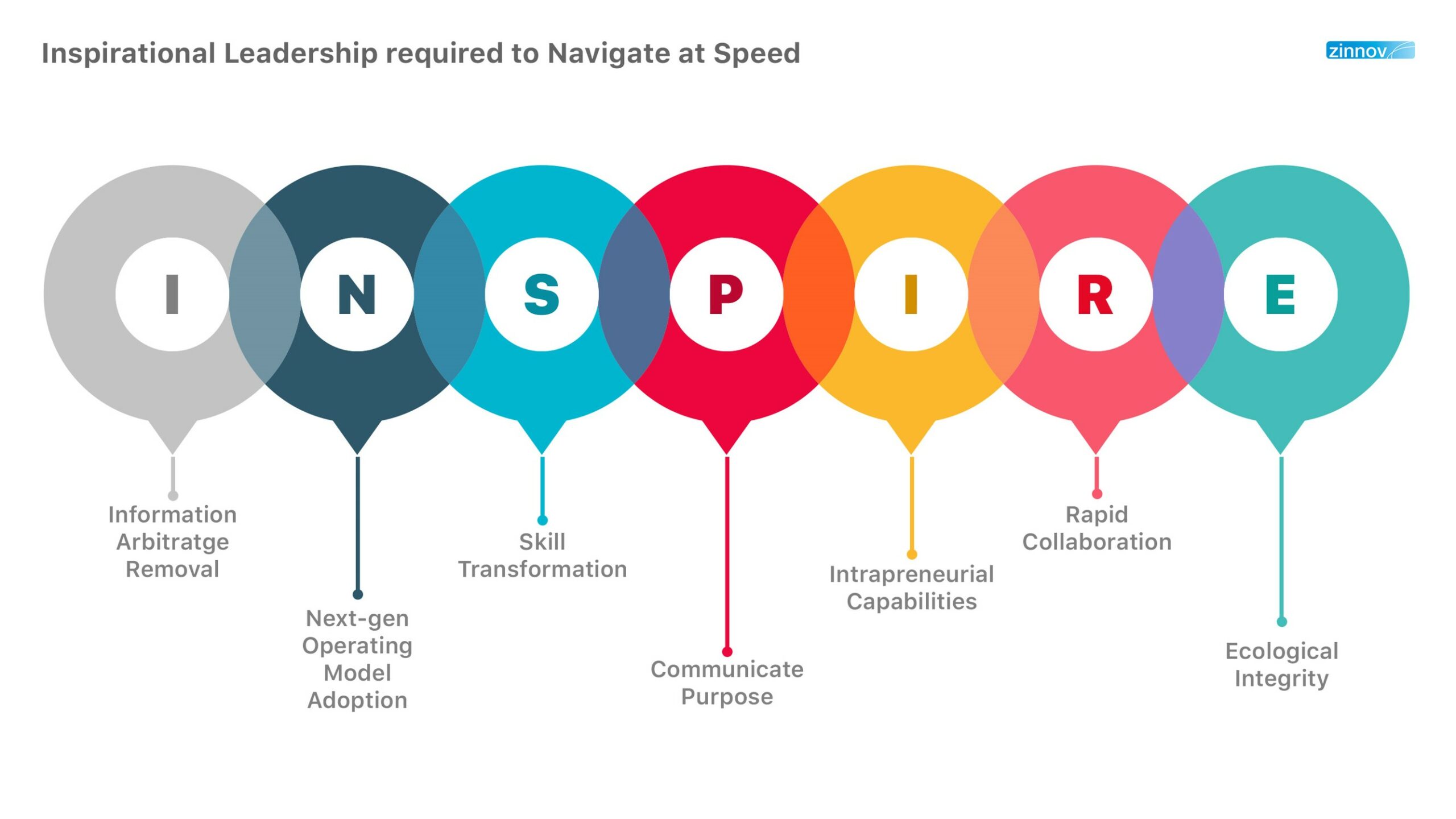
I – Work on removing any information arbitrage across the organizational hierarchy
N – Adopt next-generation operating models that optimize for speed
S – Drive a strong development program for the teams across levels
P – Over communicate the organization’s purpose
I – Build intrapreneurial skills among your leaders
R – Encourage and incentivize collaboration across the company
E – Commit to ESG and sustainability to ensure ecological integrity
The leaders who learn to navigate at speed in a remote environment will be the leaders of the next decade. Watch out for, identify, and nurture such leaders in your organizations, which will be the key competitive differentiator that sets your organization apart from the rest, in the future.